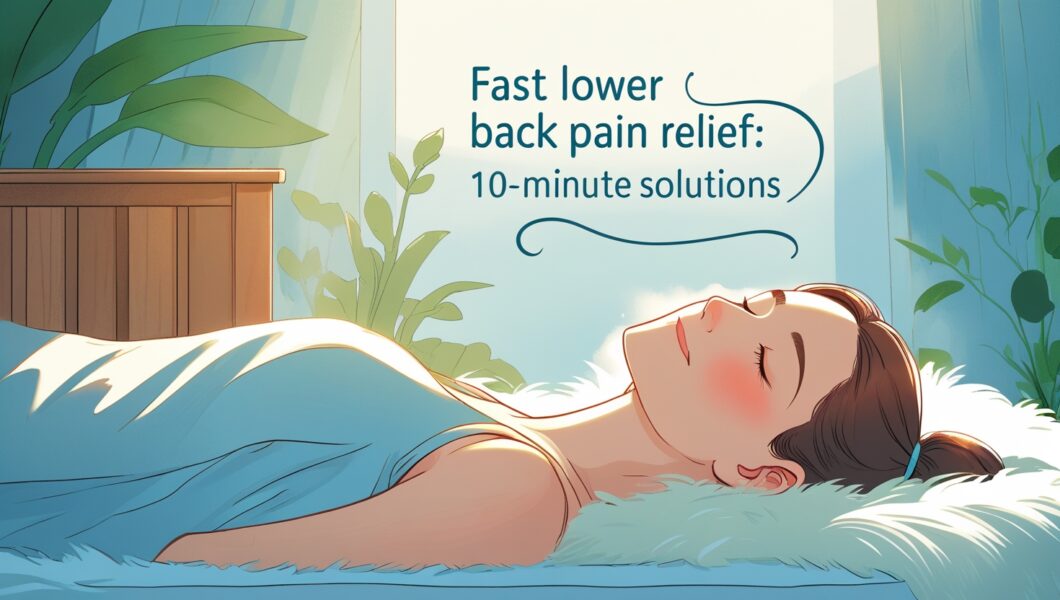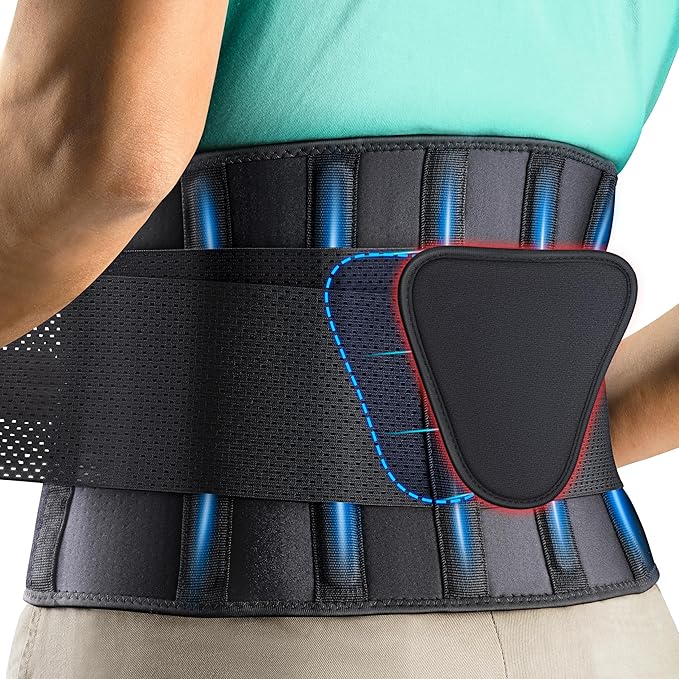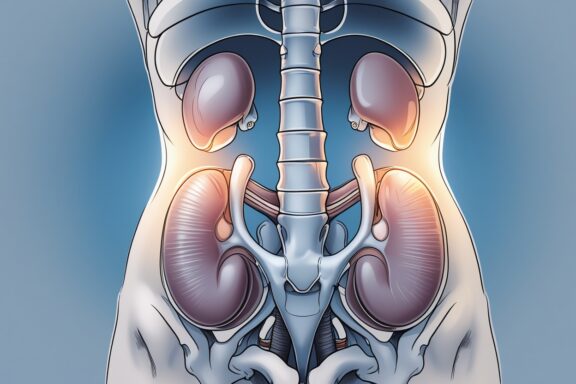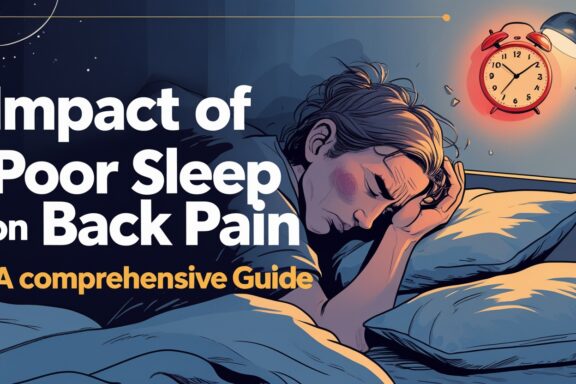Ouch! That familiar twinge in your lower back just hit again, didn't it? Whether you've been hunched over your desk all day, lifted something the wrong way, or simply woke up with that nagging ache—you're not alone. Lower back pain affects roughly 80% of adults at some point in their lives, making it one of the most common reasons people miss work or seek medical attention.
But here's the good news: you don't always need to suffer through hours of discomfort or wait for a doctor's appointment. Sometimes, the fastest path to relief is right at your fingertips. This comprehensive guide will walk you through proven, expert-backed techniques for fast lower back pain relief that take just 10 minutes or less. From gentle stretches to heat therapy and posture corrections, we've got your back—literally!
Understanding Your Lower Back Pain: The Why Behind the Ache
Before diving into solutions, let's get real about what's happening down there. Your lower back, or lumbar spine, is basically the workhorse of your body. It supports your entire upper body weight while allowing you to bend, twist, and move in countless directions throughout the day.
Most lower back pain falls into two categories: acute (sudden onset, lasting less than six weeks) and chronic (persistent pain lasting more than three months). The culprits? Well, they're surprisingly mundane. Poor posture, muscle strain, herniated discs, or simply sleeping in an awkward position can trigger that unwelcome pain party in your spine.
Interestingly, about 85% of lower back pain cases are classified as “non-specific,” meaning doctors can't pinpoint an exact structural cause. This might sound frustrating, but it's actually encouraging news! It means your pain is likely muscular or posture-related—and therefore, much more responsive to the quick relief techniques we're about to explore.
Quick Assessment: When to Seek Immediate Professional Help
Hold up! Before we jump into DIY solutions, let's talk red flags. While most back pain responds well to self-care, some situations require immediate medical attention. You should contact a healthcare provider ASAP if you experience:
- Severe pain following a fall or injury
- Pain radiating down your leg below the knee
- Numbness, tingling, or weakness in your legs
- Loss of bladder or bowel control
- Fever accompanying back pain
- Pain that worsens despite rest
If none of these apply to you, congratulations! You're likely dealing with common mechanical back pain that responds beautifully to the techniques coming up. Let's get you feeling better, shall we?
The Science Behind Fast Lower Back Pain Relief
Here's where things get fascinating. Your body has built-in pain management systems that we can activate with the right approach. When you apply heat, stretch gently, or change positions, you're essentially telling your nervous system to dial down the pain signals.
The gate control theory of pain, developed by researchers Ronald Melzack and Patrick Wall, explains how non-painful stimuli can override pain signals to the brain. This is why rubbing an injury instinctively makes it feel better—you're literally “closing the gate” on pain perception.
Additionally, gentle movement and stretching increase blood flow to affected areas, delivering oxygen and nutrients while helping remove inflammatory waste products. It's like giving your muscles a mini spa treatment! The key is working with your body's natural healing mechanisms rather than against them.
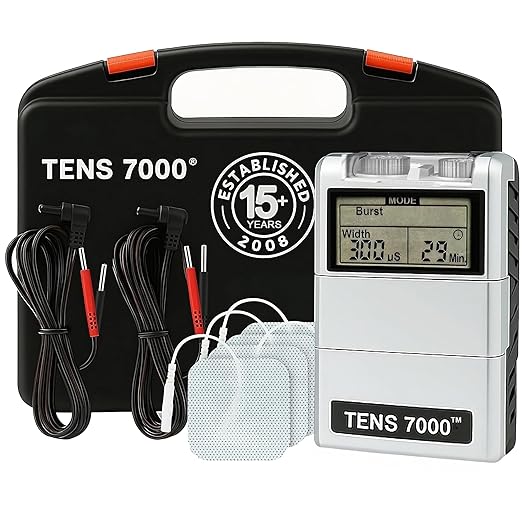
10-Minute Stretching Sequences for Immediate Relief
The Emergency Relief Routine
When pain strikes hard and fast, this sequence can provide quick comfort. Start slowly—your back is already unhappy, so we don't want to make it angrier!
Knee-to-Chest Stretch (2 minutes) Lie on your back with knees bent. Gently pull one knee toward your chest, holding for 30 seconds. Switch legs. This stretch helps relax the hip flexors and lower back muscles that often contribute to pain.
Child's Pose Variation (2 minutes)
Kneel on the floor, sit back on your heels, then reach your arms forward as you lower your chest toward the ground. This gentle inversion helps decompress the spine while stretching tight back muscles.
Gentle Spinal Twist (3 minutes) Lying on your back, keep knees bent and slowly lower them to one side while keeping shoulders flat. Hold for 90 seconds each side. This movement helps restore normal spinal mobility and can provide almost instant relief for many people.
Cat-Cow Stretch (3 minutes) On hands and knees, alternate between arching your back (cow) and rounding it (cat). This dynamic movement helps lubricate spinal joints and can quickly ease stiffness.
The Daily Maintenance Flow
Prevention beats cure every time! This routine takes just 10 minutes and can prevent many back pain episodes when done regularly.
Hip Flexor Stretch (2 minutes) Tight hip flexors are sneaky back pain culprits. Step into a lunge position, keeping your back leg straight. You should feel a stretch in the front of your hip and thigh. Hold for 60 seconds each side.
Hamstring Stretch (2 minutes) Tight hamstrings pull on your pelvis, creating lower back tension. Lie down and use a towel or resistance band to gently pull one straight leg toward you. Thirty seconds per leg, repeat twice.
Lower Back Extension (2 minutes) Lie face down, prop yourself up on your elbows, and gently arch your back. This counteracts the forward flexion we do all day and can provide significant relief for disc-related pain.
Wall Sit (2 minutes) Stand with your back against a wall and slide down into a sitting position. This strengthens your core and glutes while giving your back a break from supporting your full body weight.
Relaxation Pose (2 minutes) Finish by lying flat with knees supported by a pillow. Focus on deep breathing and let gravity help decompress your spine.
Heat and Cold Therapy: Your Temperature Toolkit
Temperature therapy is like having a pharmacy in your freezer and medicine cabinet. But when should you reach for ice versus heat? Here's the scoop:
Cold Therapy works best for acute pain, especially within the first 24-48 hours after injury. Ice reduces inflammation and numbs pain signals. Apply for 15-20 minutes at a time, always with a barrier between ice and skin to prevent frostbite.
Heat Therapy shines for chronic pain, muscle spasms, and stiffness. Heat increases blood flow, relaxes muscles, and can provide almost immediate comfort. Use a heating pad, warm bath, or even a rice sock heated in the microwave for 15-20 minutes.
Pro tip: Some people benefit from contrast therapy—alternating between hot and cold. Start with heat for 3 minutes, switch to cold for 1 minute, and repeat the cycle three times. This creates a “pumping” action that can reduce inflammation while promoting healing.
The beauty of temperature therapy? It's cheap, accessible, and you can literally feel it working within minutes. Just remember: never apply heat to fresh injuries or areas with poor circulation, and always use a barrier to prevent burns.
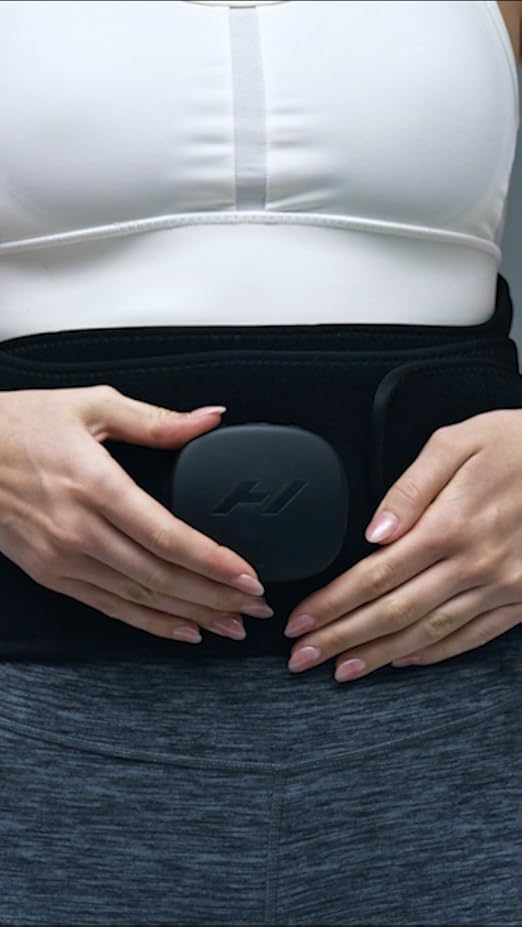
Posture Corrections That Work in Minutes
Let's be brutally honest—your posture probably sucks. Don't take it personally; most of ours do! Modern life has us hunched over computers, slouched in cars, and craned over smartphones for hours on end.
The Wall Test Stand against a wall with your back flat against it. Your head, shoulder blades, and butt should all touch the wall. If this feels weird or difficult, your posture needs work—and fast!
The 90-90-90 Rule When sitting, your hips, knees, and ankles should all be at roughly 90-degree angles. Your feet should be flat on the floor, and your computer screen should be at eye level. Sounds simple, right? Yet most of us violate this rule constantly.
Micro-Breaks Set a timer for every 30 minutes. When it goes off, stand up, stretch your arms overhead, and take five deep breaths. This simple habit can prevent the muscle fatigue that leads to pain.
The Chin Tuck Pull your chin back and up, creating a “double chin” look. Hold for 5 seconds, repeat 10 times. This counteracts the forward head posture that creates a chain reaction of tension down your spine.
These corrections might feel awkward initially—that's normal! Your muscles have adapted to poor positioning, so good posture actually requires retraining. Stick with it; most people notice a difference within days.
Breathing Techniques for Pain Management
Here's something that might surprise you: how you breathe directly impacts your pain levels. Shallow, rapid breathing—common when we're in pain—actually increases muscle tension and stress hormones. It's like adding fuel to the fire!
The 4-7-8 Technique Inhale for 4 counts, hold for 7, exhale for 8. This activates your parasympathetic nervous system (your body's “rest and digest” mode) and can provide surprisingly effective pain relief.
Belly Breathing Place one hand on your chest, one on your belly. Focus on breathing so that only the bottom hand moves. This engages your diaphragm and helps relax the muscles around your spine.
Pain-Focused Breathing As you inhale, imagine sending breath to your painful area. As you exhale, visualize tension and pain leaving your body. It might sound new-age-y, but research shows this technique can genuinely reduce pain perception.
The beauty of breathing techniques? They're free, available 24/7, and you can do them anywhere without anyone knowing. Plus, they stack beautifully with other techniques—try combining breathing exercises with gentle stretches or heat therapy for amplified benefits.
Movement-Based Solutions: Gentle Exercises That Pack a Punch
Movement might be the last thing you want to do when your back hurts, but gentle activity is often exactly what you need. The key word here is gentle—we're not talking about running a marathon or deadlifting your body weight.
Walking Sometimes the simplest solutions are the best. A gentle 5-10 minute walk can increase blood flow, reduce stiffness, and release natural pain-relieving endorphins. Start slow and listen to your body.
Water Therapy If you have access to a pool or even a bathtub, water-based movement can provide incredible relief. The buoyancy reduces pressure on your spine while the warmth relaxes muscles. Even gentle walking in chest-deep water can work wonders.
Pelvic Tilts Lie on your back with knees bent. Slowly tilt your pelvis forward and back, flattening and arching your lower back against the floor. This gentle movement helps maintain spinal flexibility without putting stress on injured tissues.
Wall Push-Ups Stand arm's length from a wall and perform push-ups against it. This strengthens your core and upper body without putting weight on your back. Start with 10 and work up gradually.
The goal isn't to exercise through severe pain—that's counterproductive. Instead, think of movement as medicine: the right dose at the right time can provide powerful healing benefits.
Technology and Tools: Modern Solutions for Ancient Problems
We live in an amazing time for pain management tools. While our ancestors might have relied solely on rest and maybe some herbal remedies, we have access to technologies that can provide rapid relief.
TENS Units Transcutaneous Electrical Nerve Stimulation devices send mild electrical pulses to interrupt pain signals. They're FDA-approved, available over-the-counter, and many people find them incredibly effective for back pain.
Massage Devices From simple tennis balls to high-tech percussive massage guns, self-massage tools can provide targeted relief. A lacrosse ball rolled along tight muscles can be surprisingly effective—and costs less than $5.
Apps and Online Resources Smartphone apps can guide you through stretching routines, remind you to take posture breaks, and even provide meditation exercises for pain management. Many are free or low-cost.
Ergonomic Supports Lumbar support cushions, standing desk converters, and ergonomic chairs might not provide instant relief, but they can prevent future episodes and support your recovery.
Remember: tools are helpers, not magic bullets. The most expensive gadget won't replace good movement habits and proper body mechanics.
Frequently Asked Questions About Fast Lower Back Pain Relief
Q: How quickly can I expect relief from these techniques? A: Many people experience some relief within 10-15 minutes of starting gentle stretches or applying heat. However, complete resolution of pain may take several days to weeks, depending on the underlying cause and severity.
Q: Is it safe to exercise with lower back pain? A: Gentle movement is usually beneficial and safe for non-specific lower back pain. However, avoid activities that worsen your symptoms, and stop immediately if you experience shooting pain, numbness, or increased symptoms.
Q: Should I use heat or ice for my back pain? A: Use ice for acute injuries or inflammation (first 24-48 hours), and heat for chronic pain, stiffness, or muscle spasms. When in doubt, try both and see which provides more relief for your specific situation.
Q: How often should I do these stretches? A: For acute pain, gentle stretches can be performed several times throughout the day as tolerated. For prevention, aim for at least once daily, preferably at the same time each day to build a consistent habit.
Q: Can poor sleep make back pain worse? A: Absolutely! Poor sleep quality can increase pain sensitivity and slow healing. Focus on sleep hygiene: consistent bedtime, comfortable mattress, and proper pillow support for spinal alignment.
Q: When should I see a doctor for back pain? A: Seek medical attention if pain persists beyond a few days, worsens despite self-care, or is accompanied by red flag symptoms like fever, numbness, weakness, or bowel/bladder changes.
Final Thoughts: Your Journey to a Pain-Free Back
Living with lower back pain doesn't have to be your new normal. The techniques we've explored—from targeted stretches to breathing exercises and posture corrections—offer proven pathways to fast lower back pain relief that fit into even the busiest schedules.
Remember, consistency trumps intensity every time. It's better to do 5 minutes of gentle stretching daily than to attempt a marathon session once a week. Your back responds to regular, kind attention much better than sporadic, aggressive interventions.
Most importantly, listen to your body. Pain is information, not punishment. These 10-minute solutions work best when combined with awareness of your body's signals and respect for its healing timeline. Some days you'll feel dramatic improvement; others might require patience and persistence.
The beauty of these approaches lies in their accessibility. You don't need expensive equipment, gym memberships, or complex schedules. Just a willingness to invest 10 minutes in your wellbeing and the knowledge that relief is often much closer than you think.
Your back has carried you through countless adventures and challenges. Now it's time to carry it toward healing with the same determination and care. Here's to pain-free days ahead and the confidence that comes with knowing you have the tools to help yourself when discomfort strikes.

